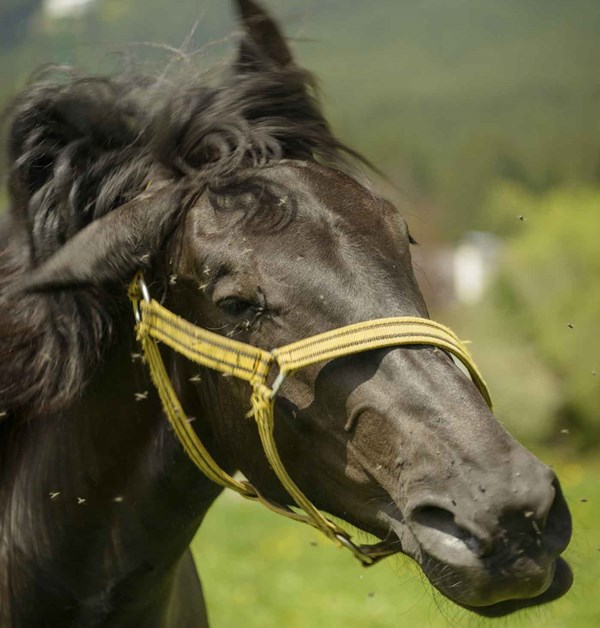 Credit: Thinkstock
Credit: ThinkstockThe battle against insects is waged through a large proportion of the year, especially in spring, summer and fall when flies, mosquitoes and ticks are in their greatest abundance. Keeping your horse comfortable is a primary objective in addition to minimizing the risk of your horse’s exposure to infectious diseases, such as mosquito-borne viruses (EEE, WEE, WNV) or Lyme disease from ticks.
Topical insecticides are often a preventative treatment of choice. There are innumerable makes and brands in bottles on the shelf, so how do you decide which to use?
For starters, look at the active ingredients in the product–most contain some form of pyrethrins, the natural extract of Chrysanthemum flowers, or they contain pyrethroids, which are synthetic compounds (cypermethrin, permethrin and resmethrin) designed to work like pyrethrins. These chemicals–both the natural and synthetic–are useful for their insecticidal capabilities as well as being safe for use on most animals. Because the ultraviolet of sunlight rapidly breaks down pyrethrin or its derivatives, insecticidal effects only last for a few hours. The addition of sunscreen might improve protection time. In some insect control products, piperonyl butoxide is added to improve effectiveness of the product by delaying breakdown of the chemical by insects.
Pyrethrin products come in a concentrate form that must be diluted, or in a ready-to-use application as a wipe, spray, or pour-on. Permectrin CDS is a pour-on insecticide with FDA approval for use in horses, but it can also be applied as a spray or with wipes. Other popular insect repellants or home-made recipes for use on horses might include ingredients such as citronella oils, lemongrass, eucalyptus oils, or Skin-So-Soft, but these aren’t as effective nor do they act as long in duration as pyrethrin-based products.
No matter how you apply a product, it must be in contact with the hair so it is important to brush away mud, dirt and grime from your horse’s coat before the application of any insecticide. Sprays are safe to use on the torso and legs, but whenever you apply fly spray to the horse’s face, only use a cloth or sponge and be sure to keep the chemical away from your horse’s eyes. Don’t forget that anything that is wiped above the eyes could run into the horse’s eyes with sweat, with the dangerous potential to chemically “burn” the cornea.
Read the labels on commercial products and if you are treating pregnant or lactating mares or foals, ensure that it is safe to use for those individuals. Also, be conscious of the proximity of other domestic animals when using these products, as for example permethrin is extremely toxic to cats.


